Tenant Screening: How to Properly Verify Rental History & Income
Placing the wrong tenant can lead to months of frustration, lost income, and expensive legal issues. That’s why thorough tenant screening isn’t optional, it's essential. But here's the truth: collecting an application is just the beginning. The real protection happens during the verification phase.
Today we’re going to break down how to properly verify two of the most critical pieces of any rental application:
✅ Rental history
✅ Income and employment
These steps come straight from Chapter 7 of our FREE Essential Guide to Rental Property Success, and they’ll help you avoid the most common and costly landlord mistakes.
How to Verify Rental History (The Right Way)
Calling previous landlords is standard practice, but many landlords stop there. To protect your investment, you need to go deeper, because unfortunately, not all information you’re given is reliable.
Here’s how to verify a tenant’s rental history effectively:
Ask Clear, Specific Questions
Vague questions lead to vague answers. Instead, ask landlords questions that are factual and hard to dodge, such as:
- What were their move-in and move-out dates?
- What was the monthly rent?
- Did they pay on time consistently?
- Were there any lease violations or complaints?
- How did they leave the unit? (Was there any damage beyond normal wear and tear?)
- Why did they move out?
- Would you rent to them again?
These specific questions help paint a clearer, more honest picture of the tenant’s past behavior.
Watch Out for Fake Landlord References
It’s unfortunate, but some applicants list friends or relatives posing as former landlords. If a reference sounds overly vague or scripted, dig deeper.
Here’s what you can do:
- Look up the property in public tax records to confirm who owns it
- Cross-check the name and phone number you were given
- Search for a legitimate property management company if it's professionally managed
It’s a few extra steps, but it could save you thousands in the long run.
Pro Tip: Contact the Landlord Before the Most Recent One
Why? Because the current landlord might not be fully honest, especially if they’re trying to get the tenant out. A prior landlord may give you a more unbiased and accurate review of the tenant’s behavior over time.
How to Verify Income & Employment
Verifying income is one of the hardest parts of tenant screening, but also one of the most important. You want to be sure your tenant can consistently cover the rent.
Look for Consistency
Start by checking for alignment between:
- Pay stubs
- Bank statements showing regular deposits
- Employer name and job title
If the numbers don’t line up, it’s a red flag. Pay stubs can be faked, but matching them to verified bank deposits adds a layer of security.
What About Calling the Employer?
It sounds like a good idea, but many employers:
- Won’t confirm income
- Have strict privacy policies
- May only confirm dates of employment (if that)
This makes phone calls less effective for landlords who self-manage.
Use Tech to Your Advantage
At True Haven Property Management, we use trusted screening software that, with the applicant’s permission, can:
- Securely link to their bank account
- Confirm actual income deposits
- Verify account balances and regularity of pay
This removes the guesswork and reduces your exposure to faked documents.
Fair Housing Reminder
Always apply the same verification standards to all applicants. Whether income comes from a job, government assistance, or housing vouchers, the process must be consistent, compliant, and non-discriminatory.
Why It’s Worth the Extra Effort
Yes, doing all of this takes time, but compare that to the stress and cost of placing someone who lied on their application.
Thorough verification is about preventing headaches later. It helps ensure you’re renting to people who:
- Pay on time
- Respect the lease
- Care for your property
- Reduce your long-term risk
Want to Go Deeper?
Our FREE Essential Guide to Rental Property Success dives deeper into compliant screening, verification tools, and detailed checklists. Chapter 7 is all about tenant screening strategies that work in California’s tough rental landscape.













